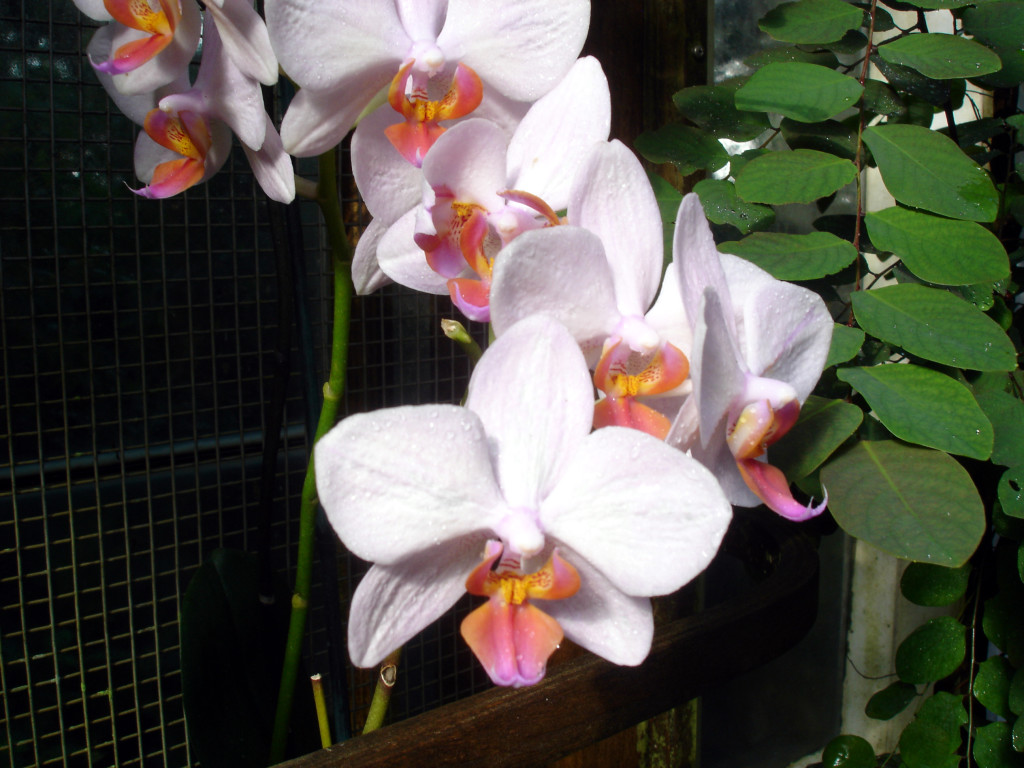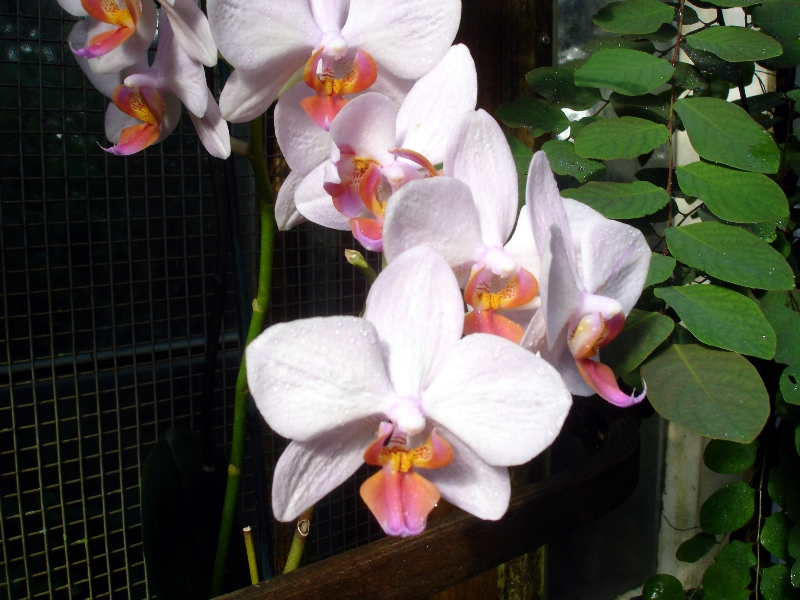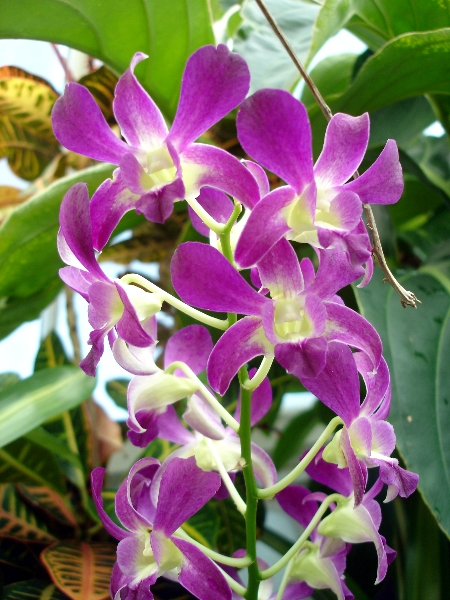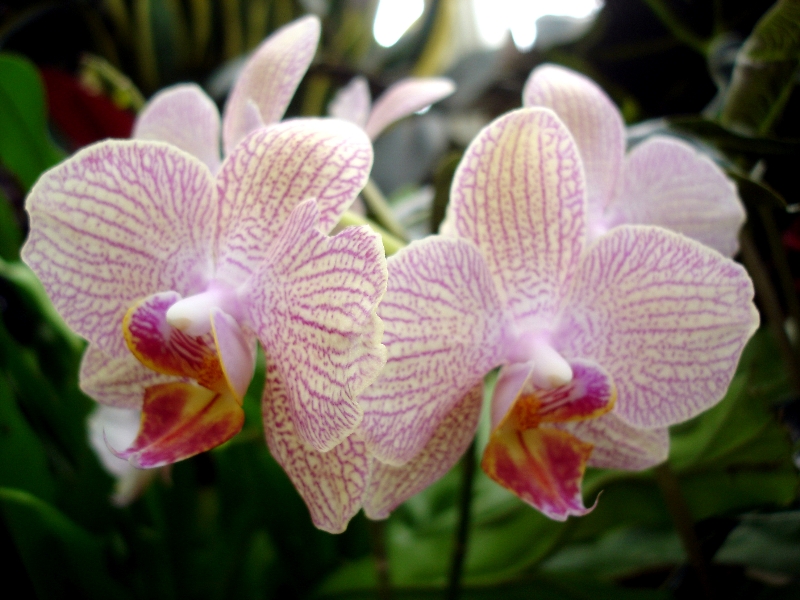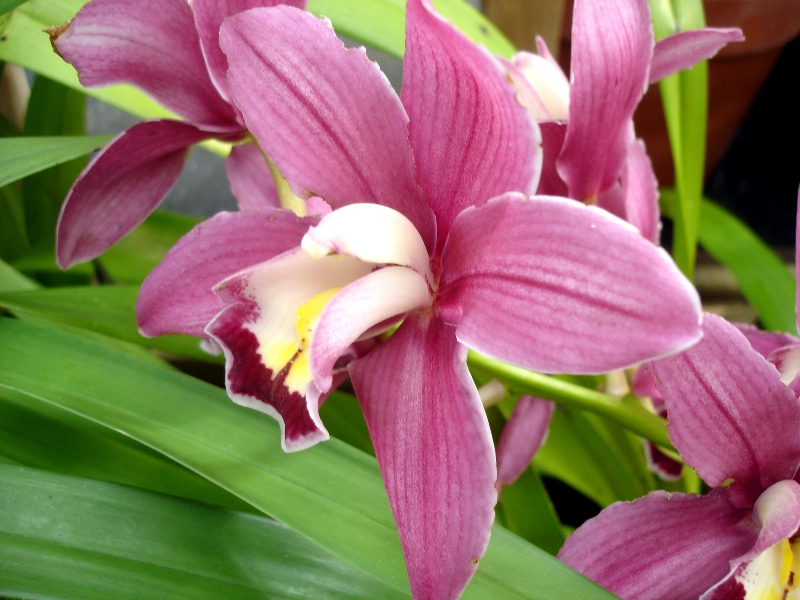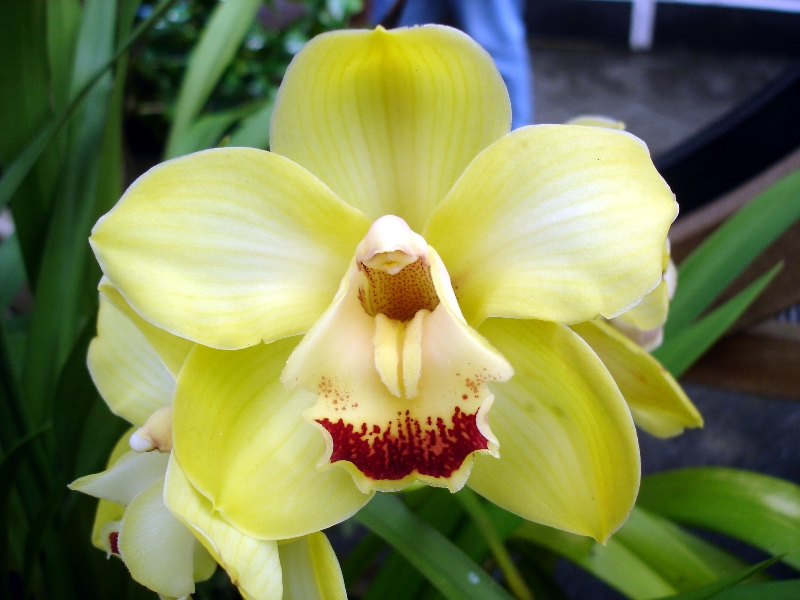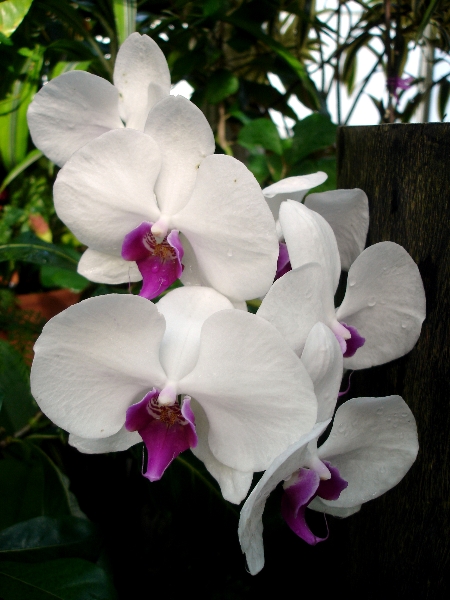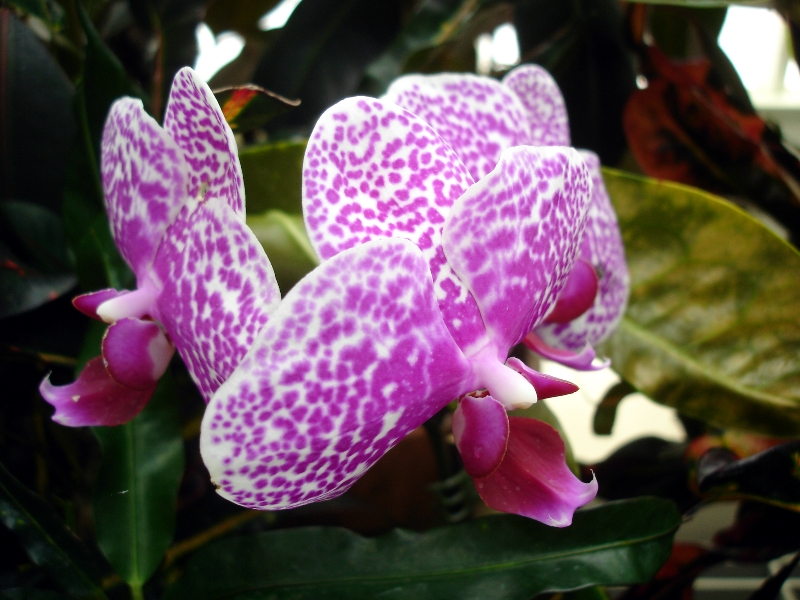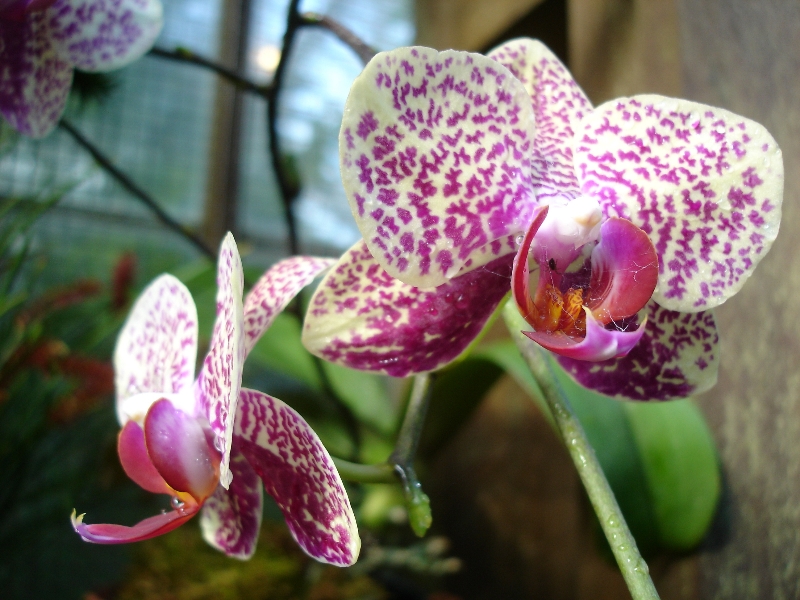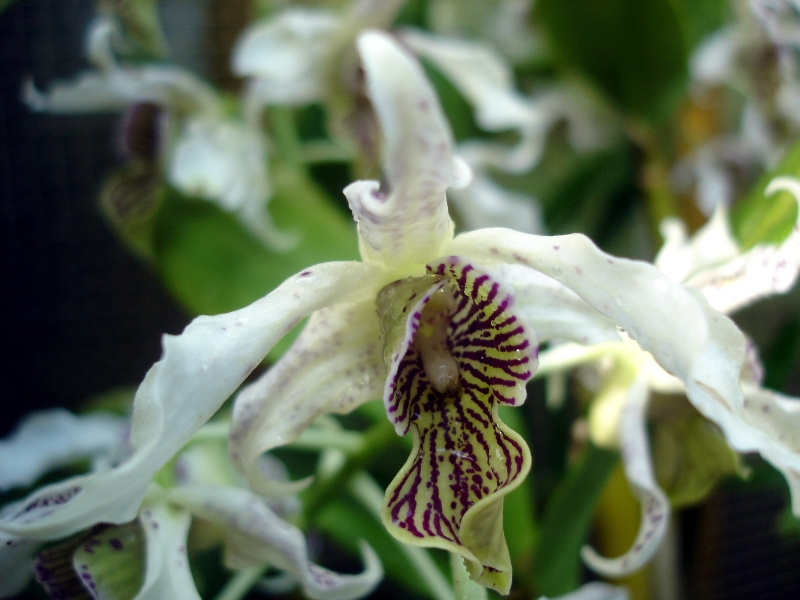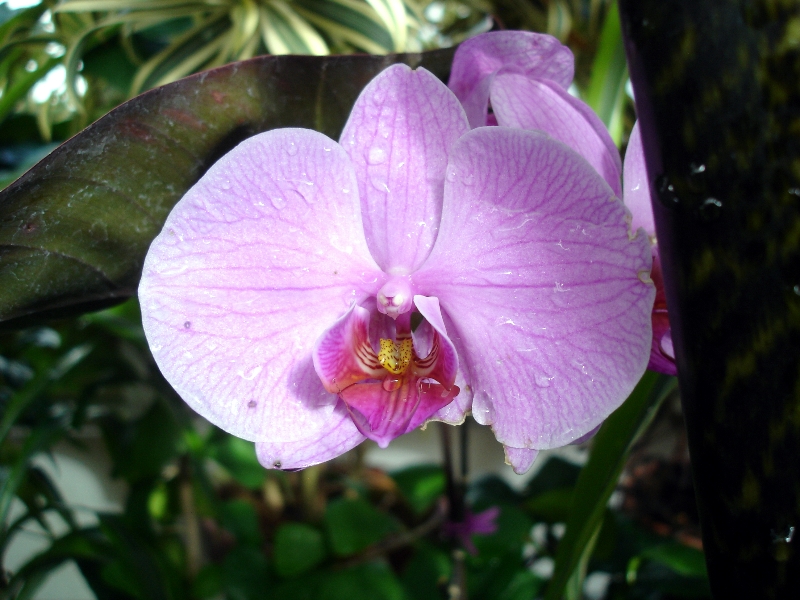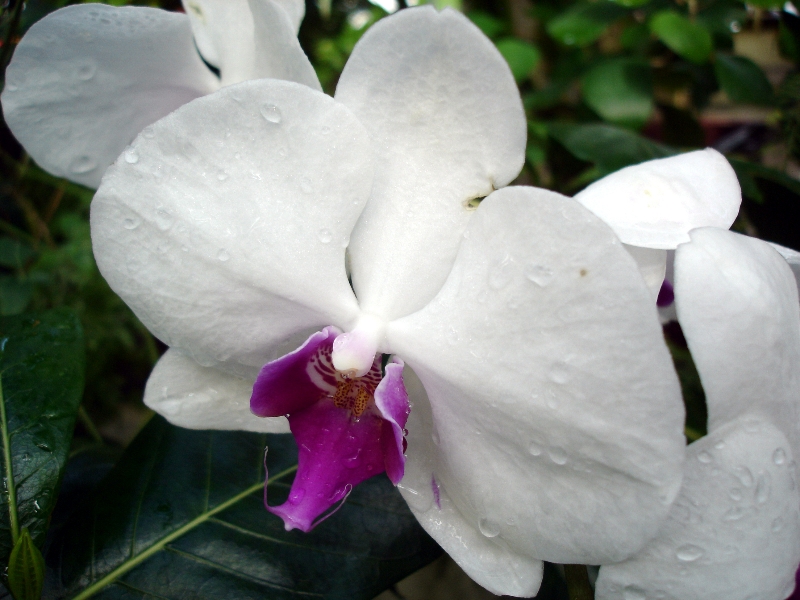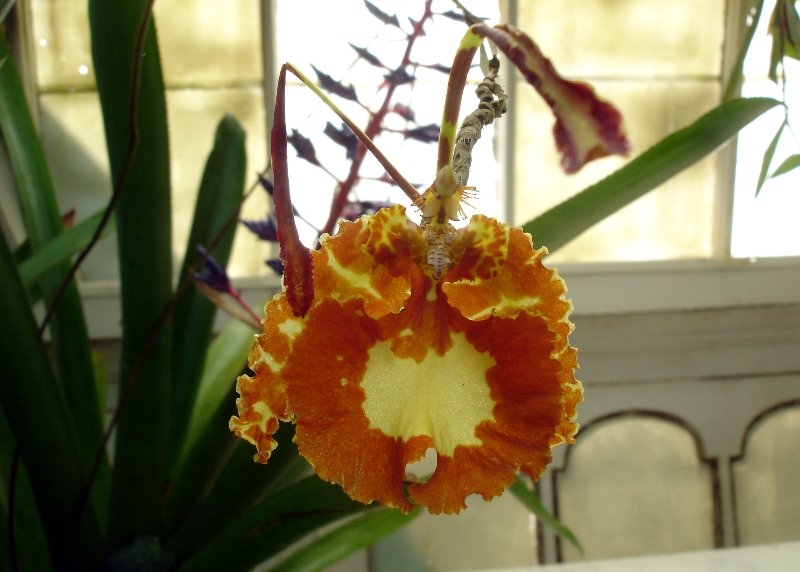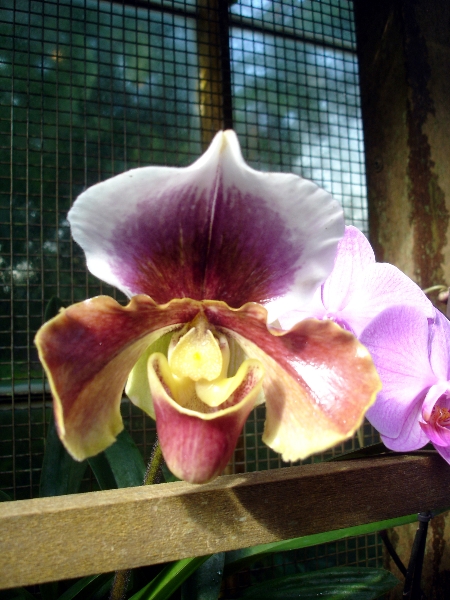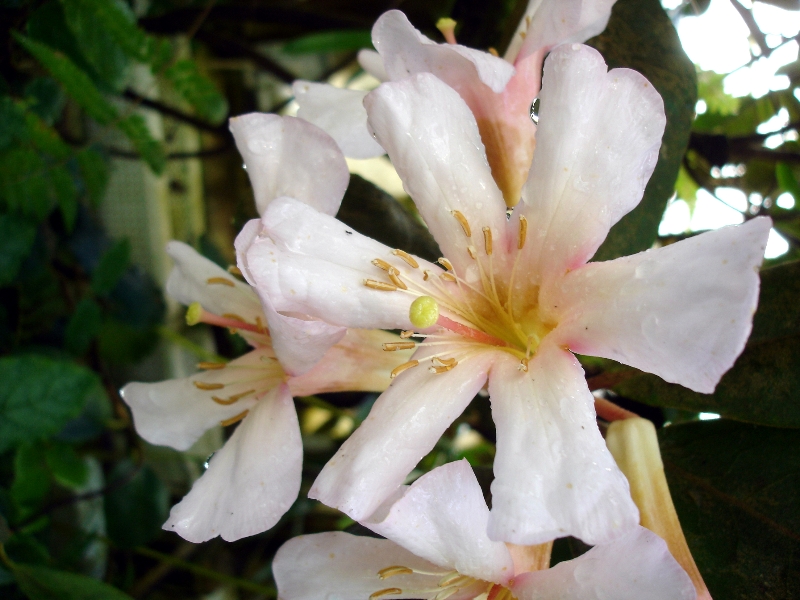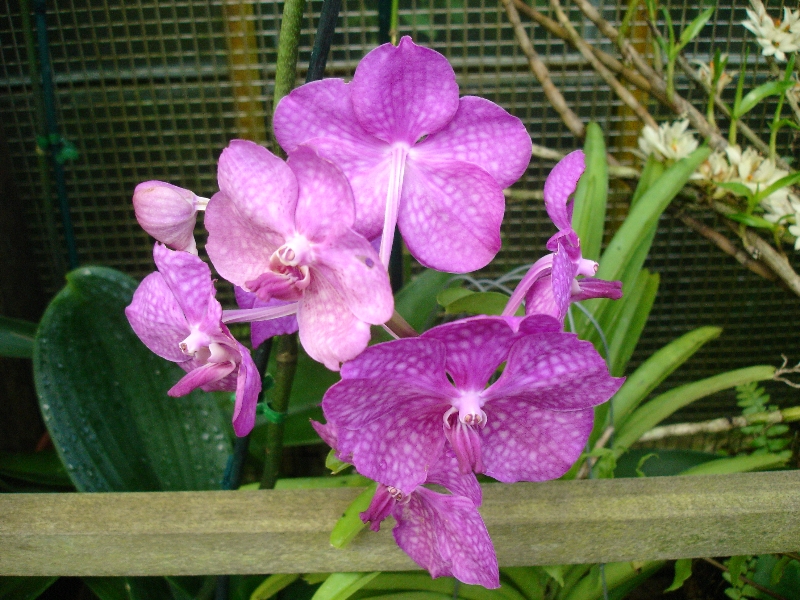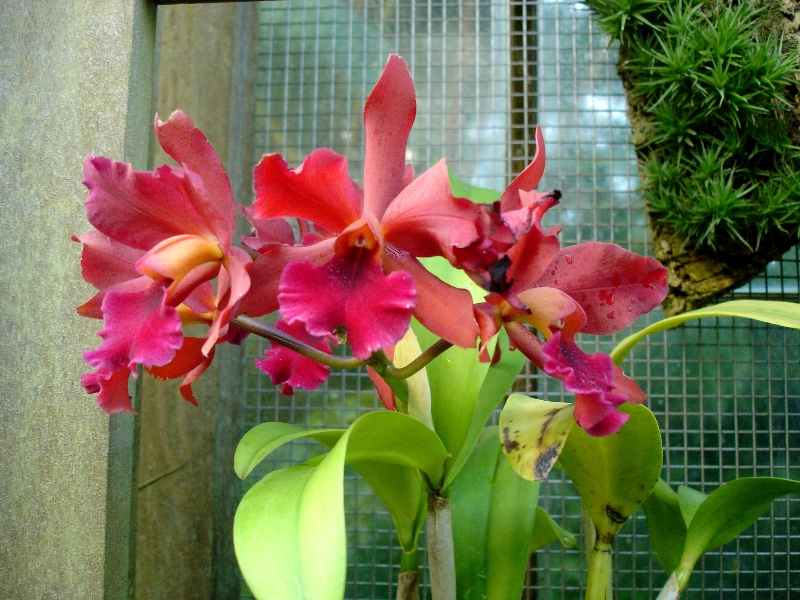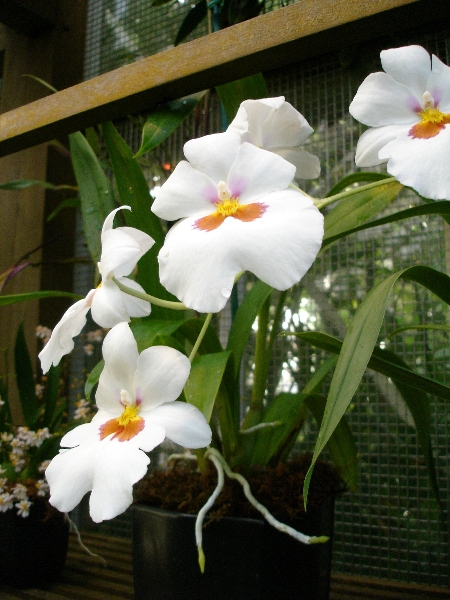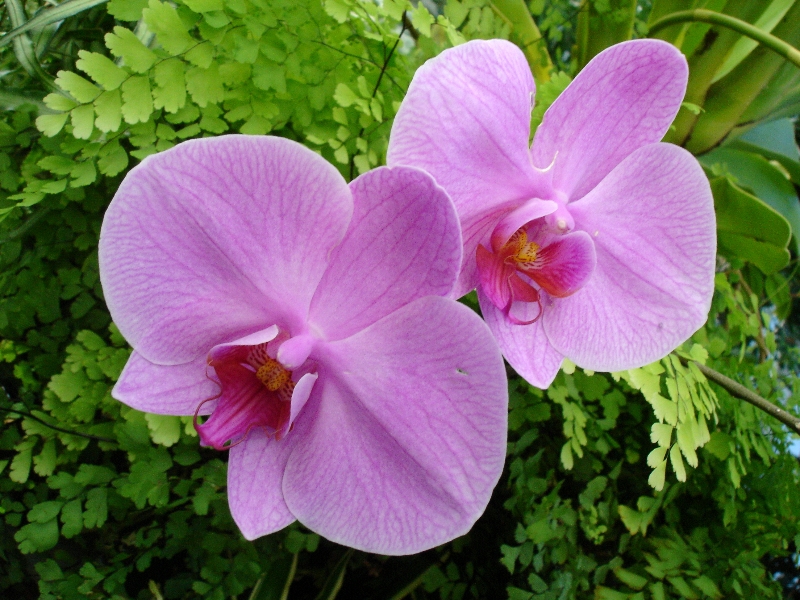In recent months we have made several trips to the San Francisco Conservatory of Flowers in Golden Gate Park, at different times of day, in sunny and rainy weather, you name it. This, to observe blooms in different stages and light conditions.
By contrast to the Conservatory, the Strybing arboretum, also in Golden Gate Park, offers open space, leisurely walks and a few exotic species. I originally expected the Conservatory to be a claustrophobic experience, and to be fair, it should be: passages are narrow, the various sections of the building are compartmentalized by double doors with a plaque reminding visitors to shut them.
As well, each section has its carefully calibrated climate control, with a fairly high level of humidity. Virtually every species in the Conservatory is exotic, and striking in more than just appearance.
On our most recent visit, about a week ago, the blooming orchids brought back a singular feeling and thoughts I remember experiencing only once.
I’ve commented before on visiting a Sphynx cattery and the feeling of inquisitive, playful intelligence I felt looking into the cats’ huge eyes.
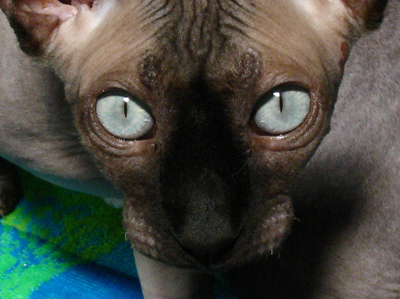
Photos do not reveal the elegance of the Sphynx in motion, or their seeming lack of fear.
And the more you know about them, the more orchids fascinate the casual observer into similar a form of reverence.
Consider a species estimated to be 120 million years old, striving in wildly different environments on all continents save Antartica, long after innumerable other species of flora and fauna alike disappeared.
A species having developed pollination methods as varied as stealth, smell and mimicry: the pattern on some orchids’ petals looks attractive to flying insects, the slippery tube-like pouch of others lures insects which fall into the opening, collecting pollen as they brush their way past to the exit…
So far, orchids have even survived man’s exploitation, which led to most species of the plant to be on endangered lists. Today, they are specifically cultivated for commercial ends. While it can seem odd to think of intelligence in such a context, I think there are lessons to draw about adaptability and coping with change, not just from orchids, of course, but from Sphynxes as well. Not to mention the enjoyment of their complex aesthetics.
Both orchids and Sphynxes are very much dependent on humans to provide the environment necessary for their survival and continued development, yet I suspect the nature of this relationship is symbiotic rather than… Parasitic.
We stand to gain so much from them…
Photos by Rudha-an

